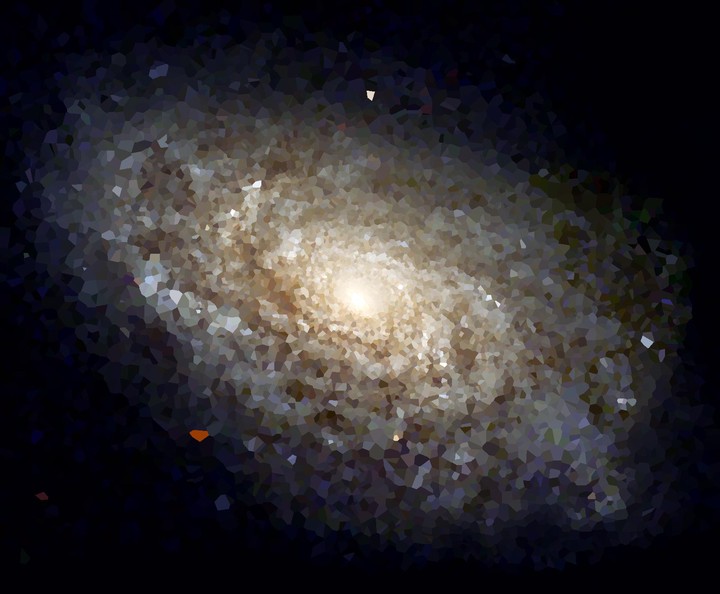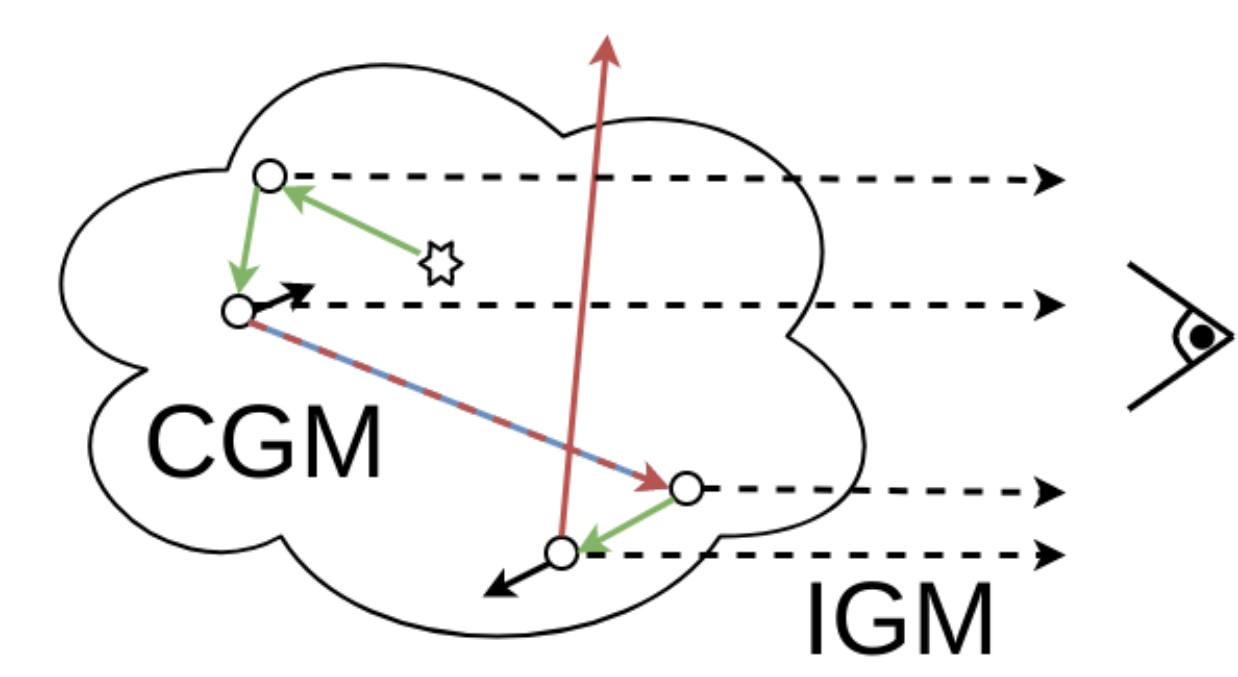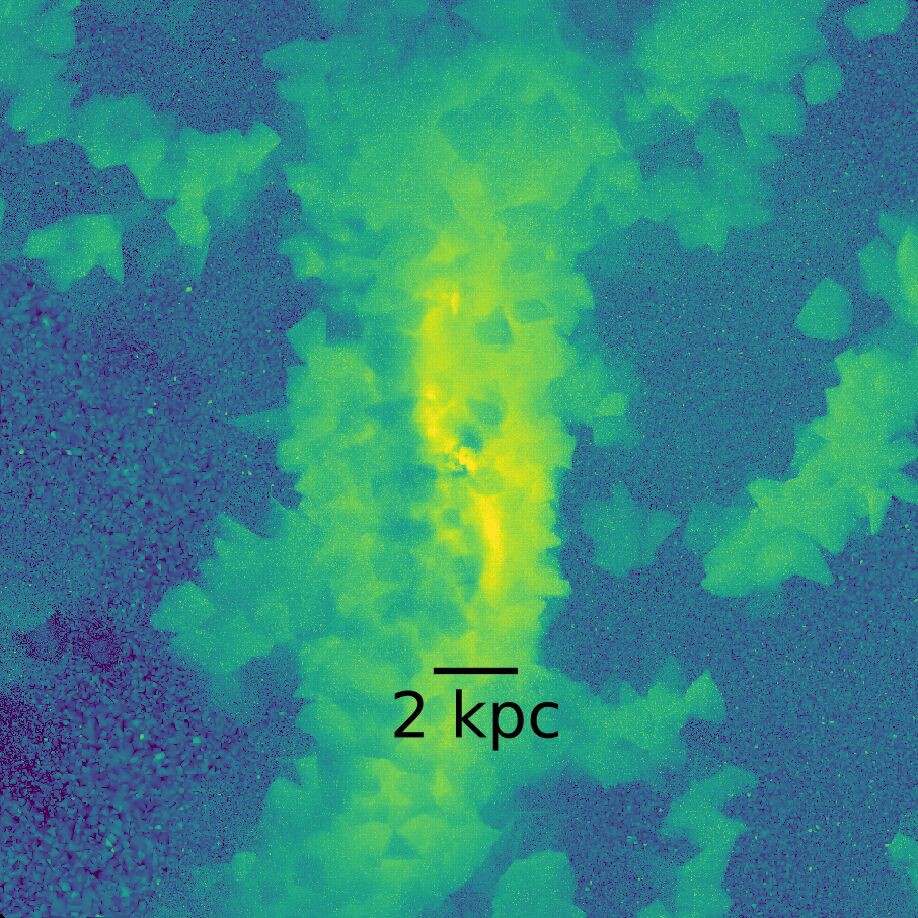Radiative Transfer on Voronoi Meshes

An increasing amount of astrophysical and cosmological simulations are carried out on a moving unstructed mesh defined by the Voronoi tessellation.

Lately, we expanded the priorly used code in Behrens et al., 2019 ( public version here) to work on such meshless structure. This will ensure the code’s relevance in the future and application to new simulations that would not have been able to be processed with prior code due to the larger memory requirement due to an intermediate interpolation step. First applications of the new code include IGM transmission and simulating individual LAEs.
Voronoi Geometry
Below are two impressions of the implemented Voronoi geometry: A video visualizing the geometry itself as seen by a simple raytracing and a projection of the Lyman-$\alpha$ photon contributions moving within such geometry.

Radiative Transfer
Next, we show the application of the new radiative transfer code with the voronoi data structure applied on different scales. For each scale, one representation without radiative transfer is given, followed by another one with radiative transfer. In this presentation, only emission from star-forming regions is considered. All simulations were carried out at a redshift of 3.0.